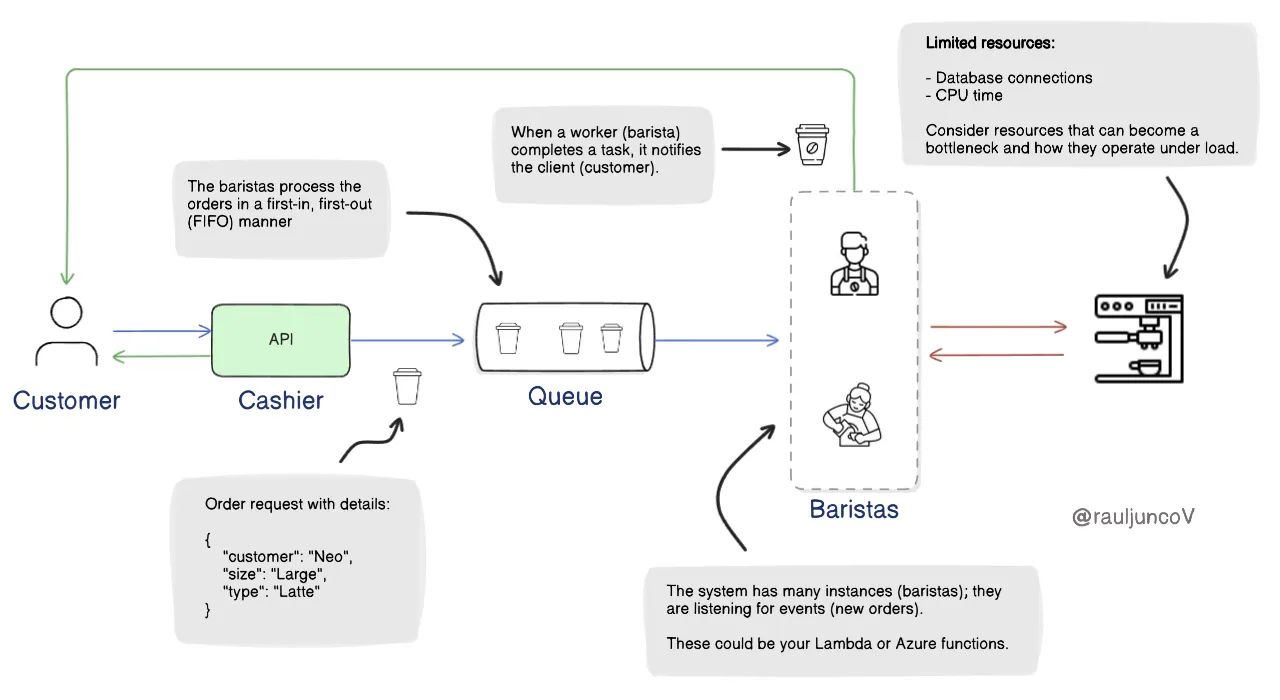What a coffee shop can teach you about system design
I recently received a genuinely good suggested read from Substack: an article by Raul Junco that uses a common, everyday experience—ordering a coffee—to explain the core principles of system design. I found the analogy so effective that I wanted to share it here.
In architecture, it can sometimes be challenging to move from complex processes, interconnections, and technologies to a clear overview that still has enough detail. Methodologies like TOGAF and tools like ArchiMate offer guidance, but they can also be overwhelming. I think this post shows an interesting perspective on how to model a system with some practical considerations along the way.

The central idea is that a busy coffee shop operates much like a distributed system in software engineering. By observing how it handles requests, queues, and bottlenecks, we can gain a practical understanding of otherwise abstract concepts.
Here is a breakdown of his main points:
- The Cashier as an API Gateway: The system’s entry point that validates and logs requests.
- The Order Queue as a Message Queue: A buffer that holds tasks, where processing time can vary.
- The Baristas as Event Consumers: Independent workers who pull tasks from the queue when they have capacity.
- The Espresso Machine as a Shared Bottleneck: A limited resource that can cause contention and slow down the system.
- Calling Your Name as a Push Notification: An efficient way to signal task completion without wasteful polling.
As Junco puts it:
Distributed systems don’t start in the cloud.
They start with understanding how work flows, where it gets stuck, and who needs to be notified.
You don’t need Kubernetes to learn system design. You just need to watch how a coffee shop works under pressure.Next time you’re in line, look around and ask:
- Where’s the queue?
- What’s async?
- What’s the bottleneck?
- What breaks under load?
If you can model a coffee shop, you can model a backend system.
Using a simple analogy like this is a powerful way to establish a shared understanding with stakeholders before introducing the complexity of a full enterprise architecture model.